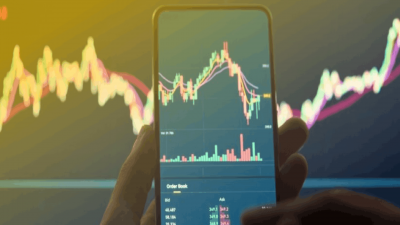What is a Variation Margin?
The amount of money the parties will pay (received) to a derivatives transaction concerning evaluating a position in these financial instruments is known as the VARIATION MARGIN. The gap between the derivative’s estimated value and current value is known as the variation margin.
How Variation Margin Works
Neither party must fully pay the contract price while engaging in a derivatives transaction. Instead, they provide the auction organizer with their original margin or collateral (the exchange). A transaction party may sell or close contracts that have already been bought at any moment. Contract values on the exchange market are updated at a predetermined frequency. These contracts’ gains or losses are fixed at the clearing. Keeping the margin (collateral) at a set amount that considers the derivative’s market quote is necessary. Thus, the variation margin is a component of the echange derivatives market’s risk management system. In such a structure, the parties to the transaction satisfy their contractual responsibilities by making margin payments.
Example of Variation Margin
This is a clear illustration of how variation margin functions. An investor spends $30 per share to buy 100 shares. The purchase’s initial margin is set at 50%. This would imply that to execute deals; the broker would always need to have $1,500 in their account (50% of 100 x $30). The maintenance margin is $1,000 in the meanwhile.
The function of Variation Margin
Variation margin functions by attaching differences in the levels of the margin account balance. Variation margin in futures trading enables clearing houses to keep facilitating deals while controlling risk. Knowing stock volatility can help with understanding how variation margin works.
As market volatility rises and falls, equity prices change. As a result, investor gains or losses can be significantly increased or decreased by trading equity derivatives on margin when prices change.
Illustration of Variation Margin
This is a clear illustration of how variation margin functions. An investor spends $30 per share to buy 100 shares. The purchase’s initial margin is set at 50%. This would imply that to execute deals; the broker would always need to have $1,500 in their account (50% of 100 x $30). The maintenance margin is $1,000 in the meanwhile.
Variation Margin and Maintenance Margin
Another phrase that is frequently used in conversations about margin trading is maintenance margin, which is commonly used as a synonym for variation margin.
The maintenance margin is the bare minimum equity a trader must constantly hold in their margin account.
The equity in an account is the sum of the value of the securities held within, less any sums payable to the brokerage.
According to FINRA regulations, the maintenance margin must equal at least 25% of the entire market value of the retained margin securities.
Yet, brokerage companies raise the bar by demanding investors fulfill a 30% or 40% margin maintenance requirement.
FINAL INSIGHT
Variation margin is used to raise the capital in an account to the margin level. Liquid funds must maintain this margin and the related initial and maintenance margin for it to serve as collateral against any potential losses from active transactions.












Comments